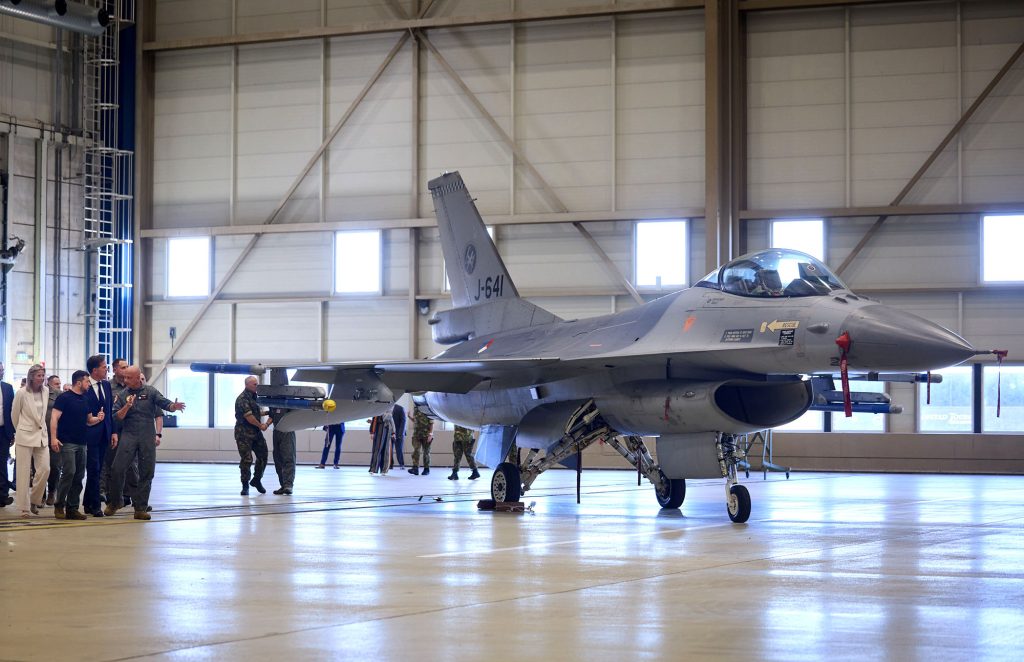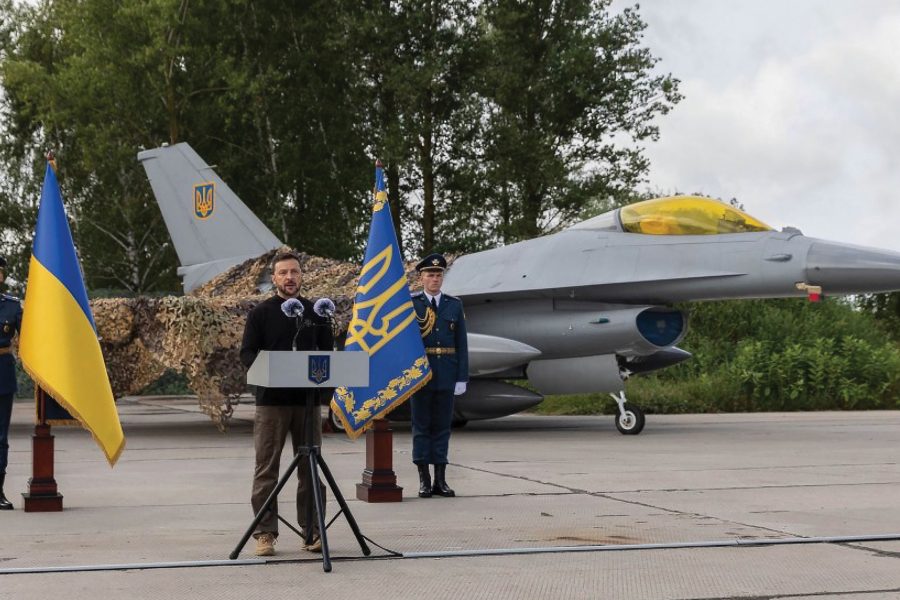Ukrainian Air Force pilots are operating F-16 fighters “every day,” targeting missile threats and striking Russia’s eastern region, the top U.S. general in Europe told lawmakers..
“They fly every day; they’ve defeated large number of cruise missile threats, and they’ve delivered an awful lot of offensive attacks as well, specifically bombing attacks in the east,” Army Gen. Christopher G. Cavoli, dual-hatted commander of Supreme Allied Commander Europe and U.S. European Command, told the Senate Armed Services Committee last week.
Cavoli’s testimony comes as the war rages on into its fourth year. The U.S. helped mediate a partial ceasefire last month, in which Russia and Ukraine agreed to halt strikes on each other’s energy infrastructure, but both sides have since accused each other of breaking the deal. Last week, Moscow launched ballistic missile strikes that claimed the lives of more than 20 Ukrainians in the central city of Kryvyi Rih.
Without divulging exact numbers, Cavoli mentioned that the current F-16s operating in Ukraine are “mainly from northern European countries, Netherlands and Denmark.”
The U.S. government greenlit the transfer of the American-made fighters in 2023, and the Netherlands and Denmark began sending the jets last summer, with plans to deliver a total dozens of F-16s between the two of them.

Belgium and Norway also had initially planned to begin sending their jets last year; Norway is donating six aircraft. Last month, Ukraine’s President Volodymyr Zelenskyy mentioned that Kyiv had recently received more F-16 fighter aircraft, though he didn’t specify how many or which country sent them. U.S. European Command did not immediately respond to confirm whether any of the Norwegian F-16s have touched down in Ukraine yet.
Meanwhile, Belgium, which plans to send 30 jets, announced in March that deliveries would be delayed until next year, according to the Prime Minister Bart De Wever.
“There are more F-16s prepared to be deployed there,” Cavoli added. “There are more pilots in the training pipeline.”
Last month, the Ukrainian Air Force released an interview with one of its F-16 pilots. The pilot, whose identity was kept confidential for security reasons, disclosed that over 80 percent of the missiles fired by these jets successfully hit their targets, eliminating Russia’s Shahed drones and cruise missiles launched from the air, sea, and land.
The pilot added that the multirole fighters carry out offensive counter-air missions, in addition to conducting multiple ground attack operations “each day” over Russia, and its occupied territories in Ukraine.
That’s a marked progression from last fall, when U.S. Air Forces in Europe commander Gen. James B. Hecker told reporters that Ukraine, still new to the F-16, was taking a cautious approach toward employing its new jets and not putting them towards the riskiest missions.
After gaining nearly 4,000 square kilometers of Ukrainian territory in 2024—seven times the amount gained in 2023—Russian forces now occupies approximately 20 percent of Ukraine. The majority of these advances are concentrated in eastern Donetsk.
However, Cavoli noted that Ukrainian troops have also taken control of the Russian region near the border, pushing back in key areas.
“There is a Ukrainian force that is holding on inside Kursk Oblast, they’ve got quite a bit of terrain,” noted Cavoli, adding that Kyiv is also holding defensive terrain in the Belgorod region, about 90 miles south of Kursk along the border. “The Ukrainians, a couple of weeks ago, pushed a smaller counteroffensive back into Russia [in Belgorod]. We still have a back-and-forth going up in that area.”
According to Cavoli, the Patriot air and missile defense system the U.S. provided Ukraine has been a “success story,” despite his initial apprehension regarding the complex system. The $1 billion defense platform, which includes interceptors, radar, command and control, and other support elements, requires about 90 personnel to operate.
“We train guys for a long time to be able to operate it, and the Ukrainians put their really their best people against it, and took to it like a fish to water,” Cavoli said.
In response to Zelenskyy’s request for additional Patriot systems, Washington agreed to work with Kyiv to explore available options, particularly in Europe.
Cavoli also said that Russia has lost more than 4,000 tanks so far in the war, with an estimated 3,000 tanks, 9,000 armored vehicles, 13,000 artillery systems, and over 400 air defense systems lost in the past year alone. However, Moscow is “on pace to replace them all.”
“They have expanded their capability to produce some things—artillery shells, cruise missiles—tremendously,” warned Cavoli.
